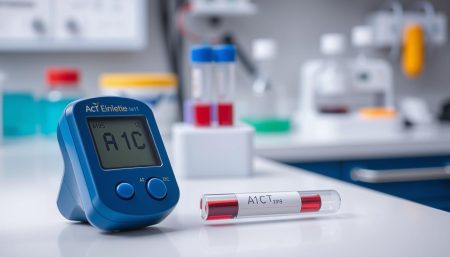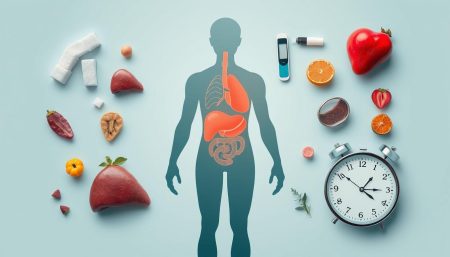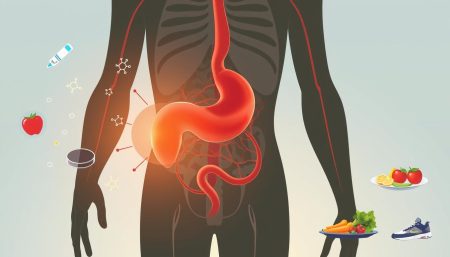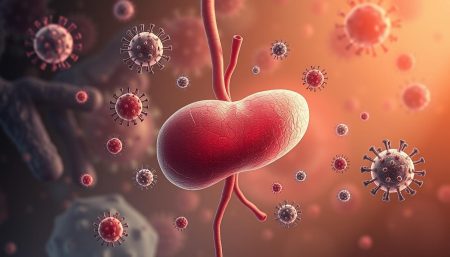Understanding the comparison of diabetes types is key. Diabetes insipidus and mellitus are two different conditions. They share the name “diabetes” but are quite different. This article will explore the unique features of each, helping to clear up common misunderstandings.
Knowing the differences between diabetes insipidus and mellitus is very important. One affects how the body handles fluids, while the other deals with insulin and glucose. We will explain the causes, symptoms, and treatments for each. This knowledge helps patients and the public understand and manage these conditions better.
Understanding Diabetes: Insipidus and Mellitus Explained
It’s important to know the difference between diabetes insipidus and mellitus. These two types have different causes, symptoms, and treatments. Each needs a specific diagnosis.
The Definition and Types of Diabetes
Diabetes insipidus and mellitus both cause a lot of urine. But they are not the same. Diabetes insipidus affects the kidneys, leading to dehydration. It’s caused by a lack of vasopressin hormone.
Diabetes mellitus is a metabolic disorder. It happens when the body can’t make enough insulin or use it well. This leads to high blood sugar.
Understanding the difference between these two types is key. It helps doctors and patients get the right treatment.
Historical Context and Medical Progression
Doctors have known about diabetes mellitus for thousands of years. It was first noted in ancient Egypt. Later, Indian and Greek doctors called it “sweet urine.”
Diabetes insipidus was identified much later. It was recognized by its symptoms and the role of hormones.
Thanks to medical progress, doctors can now diagnose and treat these conditions better. This means patients get care that fits their needs.
| Feature | Diabetes Insipidus | Diabetes Mellitus |
|---|---|---|
| Primary Dysfunction | Hormonal (Vasopressin deficiency) | Metabolic (Insulin deficiency or resistance) |
| Symptoms | Excessive urination, thirst, dehydration | High blood sugar, frequent urination, increased hunger |
| Treatment Focus | Managing hormone levels, hydration | Blood sugar regulation, diet, and insulin therapy |
Diabetes Insipidus: An Overview
Diabetes insipidus is a condition where the body can’t manage water well. It’s caused by problems with antidiuretic hormone (ADH). This hormone helps control water in the kidneys. Knowing the causes of diabetes insipidus helps us understand why people with it feel so thirsty and urinate a lot.
What Characterizes Diabetes Insipidus?
The main diabetes insipidus symptoms are intense thirst and a lot of diluted urine. This happens because the body can’t handle ADH right. Without enough ADH, the body can’t keep water as it should.
Subtypes of Diabetes Insipidus
Diabetes insipidus has four main types, each with its own causes and effects:
- Central Diabetes Insipidus: This type happens when the pituitary gland or hypothalamus gets damaged.
- Nephrogenic Diabetes Insipidus: It occurs when the kidneys don’t react to ADH properly.
- Gestational Diabetes Insipidus: This rare form is linked to pregnancy and how ADH breaks down.
- Dipsogenic Diabetes Insipidus: It’s caused by problems with the brain’s thirst center.
The table below shows the main features and causes of diabetes insipidus for each type:
| Subtype | Primary Cause | Common Symptoms |
|---|---|---|
| Central | Damage to brain regions producing ADH | Excessive urine output, dehydration |
| Nephrogenic | Insensitivity of kidneys to ADH | Persistent thirst, dilute urine |
| Gestational | Pregnancy-related enzyme activity | Increased thirst and urination |
| Dipsogenic | Damage to hypothalamus | Disordered thirst perception, polyuria |
Diabetes Mellitus and Its Global Impact
Diabetes mellitus is a metabolic disorder that causes high blood sugar levels for a long time. It poses big challenges to health systems around the world. With millions affected globally, finding effective diabetes mellitus treatment is urgent. It’s important for individual health and global economic stability.
The high number of diabetes cases affects health economies a lot. The cost of treatments and complications like heart disease and blindness is high. These issues need a lot of medical care and resources, which can be tough for public health systems, mainly in low and middle-income countries.
Managing diabetes well means catching it early and treating it right. This helps avoid serious problems later on. Ozempic is a good example. It helps control blood sugar and also improves heart health and weight.
- Enhanced insulin secretion
- Reduced glucagon production
- Slower gastric emptying
Ozempic works by mimicking the GLP-1 hormone. This helps the body control blood sugar better. It’s key for long-term diabetes mellitus treatment.
For health systems and economic planners worldwide, knowing about diabetes is important. They need to understand how common it is, how well treatments work, and the benefits of new meds like Ozempic. This knowledge helps plan better and improve care for millions with this disease.
The Pathophysiology Behind Diabetes Insipidus and Mellitus
It’s key to know the differences in diabetes insipidus vs mellitus to manage and treat them well. These differences affect treatment and patient care. This diabetes types comparison explores the biological roots of both conditions.
Diabetes Mellitus deals with insulin issues. Without enough insulin or when the body resists it, blood sugar goes up. This harms organs and systems. Diabetes Insipidus, on the other hand, is caused by a lack of Antidiuretic Hormone (ADH). This hormone helps control water in the kidneys, leading to too much water loss and thirst.
| Diabetes Type | Critical Hormone | Main Physiological Impact | Treatment Focus |
|---|---|---|---|
| Diabetes Mellitus | Insulin | Regulation of blood glucose levels | Insulin administration, dietary adjustment, physical activity |
| Diabetes Insipidus | Antidiuretic Hormone (ADH) | Water balance in the body | ADH replacement therapy, fluid management |
Managing both diabetes types requires different approaches. For Diabetes Mellitus, the goal is to improve insulin function or use. This includes insulin shots, diet changes, and exercise. For Diabetes Insipidus, hormone therapy is key to replace ADH. It also involves managing water intake and staying hydrated.
Even though both are diabetes, they have unique challenges and treatments. Accurate diagnosis and specific treatments are vital for effective management.
Symptoms Unique to Diabetes Insipidus
Diabetes insipidus has its own set of symptoms. Knowing these can help diagnose the condition early. This knowledge also helps manage the disease better, improving life quality.
How Diabetes Insipidus Symptoms Manifest
The main diabetes insipidus symptoms are too much urine and extreme thirst. These symptoms make people drink and pee a lot. It can mess up sleep, work, and daily life.
- Polyuria: Producing more than 3 liters of urine in a day, dramatically exceeding normal levels.
- Polydipsia: An insatiable urge to drink fluids, often totaling many liters a day.
These signs show the body can’t balance fluids right. It’s because of low antidiuretic hormone or kidney issues. This makes diagnosing diabetes insipidus complex.
Consequences of Untreated Diabetes Insipidus Symptoms
Not treating diabetes insipidus can cause big problems. It can lead to severe dehydration and an imbalance of electrolytes. This can cause many health issues.
- Dehydration: Symptoms can escalate to lethargy, dizziness, or even seizures in severe cases.
- Electrolyte Imbalance: Can result in irregular heartbeat, muscle cramps, and several other neurophysiological complications.
Because of these risks, managing and diagnosing diabetes insipidus early is key. Regular check-ups and talking to doctors can help avoid these problems.
Identifying Symptoms of Diabetes Mellitus
Spotting the early signs of diabetes mellitus can help get a quick diagnosis and diabetes mellitus treatment. This can prevent serious health problems. Diabetes mellitus deals with blood sugar, unlike diabetes insipidus, which affects fluid balance. Knowing the differences between diabetes insipidus and mellitus is key to the right treatment.
Early Warning Signs of Diabetes Mellitus
The start of diabetes mellitus can be slow, so it’s important to notice small changes. Common early signs include:
- Frequent urination, often at night
- Unusual thirst
- Weight loss without eating more
- Increased hunger
- Blurred vision
- Feeling tired all the time
These signs tell people to see a doctor, starting the path to early diabetes mellitus treatment.
Long-Term Health Concerns Related to Diabetes Mellitus
If diabetes mellitus isn’t treated, it can cause serious problems. Here are some issues that can happen:
- Heart disease
- Nerve damage, often in the legs and feet
- Eye problems that can lead to blindness
- Kidney damage
- Higher risk of infections
These issues show why it’s vital to understand the differences between diabetes insipidus and mellitus. Each needs its own treatment plan.
Diabetes Insipidus vs Mellitus: Diagnosis and Tests
Getting the right diagnosis for diabetes is key. It helps doctors know how to treat it. Knowing the difference between diabetes insipidus and mellitus is important. It means patients get the right care fast.
Diagnostic Criteria for Diabetes Insipidus
Diagnosing diabetes insipidus involves several tests. The water deprivation test is one. It checks how well the kidneys concentrate urine without water.
Another test is measuring antidiuretic hormone (ADH) levels. In central diabetes insipidus, ADH levels are low. In nephrogenic diabetes insipidus, they don’t respond right to the body’s needs.
Standard Testing Procedures for Diabetes Mellitus
Diabetes mellitus is diagnosed by testing blood glucose levels. The fasting blood glucose test is used. It checks glucose levels after not eating for a night.
The Hemoglobin A1c test is also used. It shows the average blood glucose level over three months. These tests help find diabetes mellitus and check if treatment is working.
Knowing the tests for diabetes insipidus and mellitus is important. It helps doctors identify the disease correctly. It also helps them create treatment plans that fit each patient’s needs.
Treating Diabetes Insipidus: Methods and Medications
The treatment of diabetes insipidus focuses on the causes of diabetes insipidus and reducing diabetes insipidus symptoms. It combines medication and lifestyle changes to balance fluids and avoid dehydration.
Desmopressin, a synthetic hormone, is a key treatment for diabetes insipidus. It replaces the missing antidiuretic hormone, controlling symptoms. Patients find it helps manage frequent urination and thirst.
Along with medication, lifestyle changes are important. Keeping track of fluid intake and urine output is key. Talking to healthcare providers about fluid needs is also helpful.
Knowing the causes of diabetes insipidus and its diabetes insipidus symptoms is vital. This knowledge helps patients make better health choices. Following treatment plans can improve life quality and prevent complications. For more on hormone issues, see this article on hormone imbalances and adrenal.
| Medication | Purpose | Typical Dosage |
|---|---|---|
| Desmopressin | Replaces missing antidiuretic hormone | Administered nasally, orally, or by injection, dosage varies |
| Thiazide diuretics | Helps reduce urine output | Dosage adjusted based on patient’s response and electrolyte balance |
| Nonsteroidal anti-inflammatory drugs (NSAIDs) | Used to enhance the effects of desmopressin | Varies based on individual health needs |
Patients with diabetes insipidus should stay in touch with endocrinology or nephrology specialists. These experts can adjust treatments and manage symptoms effectively.
Comprehensive Management of Diabetes Mellitus
The diabetes mellitus treatment world is wide, with both medicines and lifestyle changes at its core. It’s key to make care fit each person’s needs because diabetes is complex and affects everyone differently.
At the heart of diabetes mellitus treatment are insulin and oral medicines to keep blood sugar in check. Insulin is a must for type 1 diabetes and often for type 2 when other drugs don’t work. Oral medicines like metformin and sulfonylureas mainly help type 2 diabetes.
- Regular glucose monitoring
- Diet modifications tailored to individual nutritional needs
- Physical activity to enhance insulin sensitivity
- Medication adherence
Keeping an eye on health and learning about diabetes is vital to avoid serious problems. A hands-on approach to diabetes mellitus treatment greatly improves a person’s life and outlook on the disease.
Causes and Risk Factors for Diabetes Insipidus
Knowing the causes of diabetes insipidus is key to catching it early. This rare condition comes from genetics, medical issues, and lifestyle choices.
Genetic Predispositions to Diabetes Insipidus
Genetics play a big part in diabetes insipidus, mainly the familial kind. Faulty genes affect vasopressin, a hormone that helps the kidneys hold water. This leads to too much thirst and urination.
Lifestyle Influences and Other Risk Indicators
Genetics aren’t the only thing that matters. Head injuries, infections, and tumors can mess with vasopressin too. Diseases like sarcoidosis and encephalitis can also cause it.
Lifestyle choices might not cause diabetes insipidus but can make symptoms worse. Drinking enough water and eating right are important for managing symptoms.
| Condition or Factor | Relationship to Diabetes Insipidus |
|---|---|
| Genetic Mutations | Direct cause through disruption of vasopressin production |
| Head Trauma | Potential cause by damaging vasopressin-producing areas |
| Systemic Diseases | Can trigger the condition by affecting the hypothalamus or pituitary gland |
| Lifestyle Factors | Indirect impact by worsening existing symptoms |
Exploring the Causes of Diabetes Mellitus
Diabetes mellitus starts with a mix of genes and environment. Knowing these causes helps in treating and managing the disease. Main factors include genetics, obesity, not moving much, and bad eating habits.
Genes are a big deal, as family history of diabetes raises your risk. But, lifestyle and diet also play a big part. For example, being overweight is a big risk for type 2 diabetes.
Not being active is another big risk. Sitting too much makes your body less sensitive to insulin, leading to diabetes. Also, eating too many calories and not enough nutrients makes diabetes worse. So, it’s key to change these risk factors to treat and prevent diabetes.
| Factor | Role in Diabetes Mellitus | Prevention Strategies |
|---|---|---|
| Genetic Predisposition | Increases susceptibility | Early screening and ongoing monitoring |
| Obesity | Major risk factor contributing to insulin resistance | Dietary modifications and increased physical activity |
| Physical Inactivity | Decreases insulin sensitivity | Regular physical exercise |
| Poor Diet | Leads to obesity and poor metabolic health | Healthy eating plans, reduction of high-calorie foods |
By tackling these issues, people can lower their risk and better manage their diabetes. This is part of a full diabetes mellitus treatment plan.
Lifestyle and Prevention Strategies for Both Diabetes Types
Living a healthy lifestyle is key for managing diabetes insipidus and mellitus. Even though these conditions are different, some strategies work for both. These strategies can help those with either type of diabetes.
Dietary Considerations for Diabetes Management
Eating a balanced diet is vital for diabetes management. It helps control blood sugar levels in diabetes mellitus. It also keeps hydration and salt levels right in diabetes insipidus. Here are some tips to follow:
- Eat a variety of fruits and vegetables for vitamins and minerals.
- Choose whole grains over processed foods for better fiber.
- Go for lean proteins and watch portion sizes to avoid too many calories.
- Drink less sugary drinks and snacks to prevent blood sugar spikes.
These diet changes can help manage diabetes and improve overall health.
Exercise and its Role in Diabetes Prevention
Regular exercise is essential for managing and preventing diabetes. It makes insulin work better in diabetes mellitus. It also helps with weight management, which is good for both conditions.
- Cardio exercises like walking, swimming, or cycling help control blood sugar.
- Do strength training twice a week to build muscle and boost metabolism.
- Try flexibility exercises or yoga to improve blood flow and reduce stress.
Regular physical activity helps manage symptoms and improves life quality.

| Activity Type | Benefits for Diabetes Insipidus | Benefits for Diabetes Mellitus |
|---|---|---|
| Cardiovascular Training | Improves heart health and hydration status | Helps control blood sugar and reduces cardiovascular risk |
| Strength Training | Enhances muscle mass, aiding in weight control | Improves insulin sensitivity and reduces blood glucose levels |
| Flexibility Training | Decreases stress, promoting hormonal balance | Improves circulation and lowers stress hormones |
Knowing and using these strategies daily is key for managing and preventing diabetes. By focusing on diet and exercise, patients can improve their health.
Diabetes Insipidus vs Mellitus: Prognosis and Quality of Life
It’s important to understand the long-term effects of diabetes. We need to compare diabetes insipidus and mellitus to see how they affect patients. Both conditions have different impacts on health and daily life.
Living with Diabetes Insipidus: Patient Perspectives
People with diabetes insipidus struggle with dehydration and keeping their fluid levels right. They use treatments like desmopressin and closely watch their water intake. This condition requires big changes in their lifestyle, affecting their quality of life.
Prognosis and Health Outcomes for Diabetes Mellitus Patients
Diabetes mellitus can lead to serious health issues like heart disease, kidney damage, and nerve problems. To improve their health, patients need to control their blood sugar, eat well, and exercise. Thanks to medical progress, they can live longer, but they must stick to their treatment plans to avoid serious problems.
Studying diabetes insipidus and mellitus shows big differences in how they affect people. Even though both are chronic conditions, the experience and outlook can vary a lot depending on the type of diabetes.
Comparing Diabetes Insipidus and Mellitus: Key Takeaways
We’ve explored the differences between diabetes insipidus vs mellitus. Both are called diabetes, but they are not the same. Diabetes insipidus is a rare condition that affects how our body handles fluids. On the other hand, diabetes mellitus is more common and deals with how our body uses glucose.
Diabetes insipidus happens when we don’t have enough antidiuretic hormone or our body doesn’t respond to it well. Diabetes mellitus, on the other hand, is caused by not making enough insulin or not using it well.
Getting the right diagnosis is very important. This is because each condition needs its own treatment plan. For diabetes insipidus, treatment often includes hormone replacement and watching fluid intake. Diabetes mellitus treatment involves monitoring blood sugar, using insulin, and making lifestyle changes.
Even with these challenges, people with diabetes can live full and happy lives. A good care plan is key. This includes regular check-ups, learning about the condition, and staying in touch with healthcare. With the right care and support, people can manage their symptoms and avoid serious problems.
FAQ
Q: What is the main difference between diabetes insipidus and diabetes mellitus?
A: Diabetes insipidus is a hormonal disorder that affects how the body absorbs water. This leads to a lot of thirst and urination. On the other hand, diabetes mellitus is a metabolic disorder. It happens when the body can’t control blood sugar levels because of insulin problems.
Q: What are the symptoms unique to diabetes insipidus?
A: Symptoms of diabetes insipidus include extreme thirst and a lot of urine. If you don’t drink enough water, you can get dehydrated.
Q: How is diabetes mellitus treated?
A: Treatment for diabetes mellitus includes insulin for Type 1 and oral medications for Type 2. Lifestyle changes like diet and exercise are also key. Regular blood sugar checks help manage the condition.
Q: What causes diabetes insipidus, and how is it diagnosed?
A: Diabetes insipidus can be caused by damage to the hypothalamus or pituitary gland. It can also be genetic or due to ADH imbalance. Tests like the water deprivation test help diagnose it.
Q: Can diabetes insipidus and diabetes mellitus occur together?
A: Yes, it’s rare but possible to have both conditions. This is called polyglandular deficiency syndrome. Each condition needs its own treatment plan.
Q: Are there long-term health concerns associated with untreated diabetes mellitus?
A: Untreated diabetes mellitus can cause serious problems. These include heart disease, kidney failure, nerve damage, vision loss, and an increased risk of infections and slow-healing wounds.
Q: What lifestyle changes are recommended for managing diabetes?
A: A balanced diet and regular exercise are beneficial for both types of diabetes. Maintaining a healthy weight, monitoring blood sugar, and staying hydrated are also important. These steps can help manage symptoms and prevent complications.
Q: How does the treatment of diabetes insipidus differ from diabetes mellitus?
A: Diabetes insipidus treatment focuses on controlling symptoms with desmopressin and drinking enough water. Diabetes mellitus treatment involves medications, dietary changes, and exercise to manage blood sugar levels.
Q: Can changes in diet reduce the risk of developing diabetes mellitus?
A: Yes, diet is key in managing and preventing diabetes mellitus. Eating whole grains, vegetables, lean proteins, and avoiding processed foods and sugars can help manage weight and blood sugar levels.
Q: What are the leading risk factors for developing diabetes mellitus?
A: Risk factors for diabetes mellitus include obesity, lack of exercise, family history, high blood pressure, high cholesterol, and a diet high in processed foods and sugar.


















